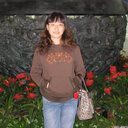Skin rash could predict the response to EGFR tyrosine kinase inhibitor and the prognosis for patients with non-small cell lung cancer: a systematic review and meta-analysis.
Atslēgvārdi
Abstrakts
BACKGROUND
The aim of this study was to assess the role of skin rash in predicting the efficacy of epidermal growth factor receptor tyrosine kinase inhibitors (EGFR-TKIs) and the prognosis of patients with non-small cell lung cancer (NSCLC).
METHODS
We systematically searched for eligible articles investigating the association between rash and the efficacy of EGFR-TKIs and the prognosis of patients with NSCLC. The summary risk ratio (RR) and hazard ratio (HR) were calculated using meta-analysis.
RESULTS
We identified 33 eligible trials involving 6,798 patients. We used two different standards to group the patients [standard 1: rash vs. no rash, standard 2: rash (≥ stage 2) vs. rash (stage 0, 1)]. For standard 1, the objective response rate (ORR) and disease control rate (DCR) of the rash group were significantly higher than the no rash group [RR = 3.28; 95% CI: 2.41-4.47(corrected RR = 2.225, 95% CI: 1.658-2.986); RR = 1.96, 95% CI: 1.58-2.43]. The same results were observed for standard 2. For standards 1 and 2, the progression-free survival (PFS) (HR = 0.45, 95% CI: 0.37-0.53; HR = 0.57, 95% CI: 0.50-0.65) and overall survival (OS) (HR = 0.40, 95% CI: 0.28-0.52; HR = 0.53, 95% CI: 0.35-0.71) of the rash group were significantly longer than the control group, and the same results were observed in the subgroup analysis.
CONCLUSIONS
skin rash after EGFR-TKI treatment may be an efficient clinical marker for predicting the response of patients with NSCLC to EGFR-TKIs. Furthermore, skin rash is also the prognostic factor of patients with NSCLC. Patients with skin rash have a longer PFS and OS.




